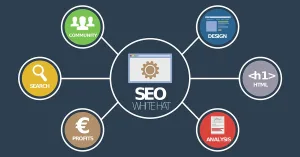One of the biggest changes to happen in the sphere of lending and the lending process is the aggregation of consumer data for faster loan approval/decision making. With data aggregation, a consumer can be approved or rejected within seconds for a loan or the financing of big-ticket items.
The IBM Knowledge Center explains data aggregation as follows:
Data aggregation is the process where raw data is gathered and expressed in a summary form for statistical analysis.
For example, raw data can be aggregated over a given time period to provide statistics such as average, minimum, maximum, sum, and count. After the data is aggregated and written to a view or report, you can analyze the aggregated data to gain insights about particular resources or resource groups. There are two types of data aggregation:
- Time aggregation--data points for a single resource over a specified time period.
- Spatial aggregation--data points for a group of resources over a specified time period.
If lenders use data aggregation in tandem with MoneyThumb's product PDF Insights, you will be approving loans confidently with lightning speed.
Finicity Co-Founder and Executive Vice President Nick Thomas had this to say about data aggregation, "Aggregation is similar to what borrowers "have been doing for decades-just quicker."
Kabbage CEO Rob Frohwein says, "I don't even know if we'd be in business had the online lender not insisted on aggregation."
So long as the technology is working as intended, lenders will gain something they may have not been privy to before — years’ worth of transaction data, such as cash flows that aggregators think lenders should crunch as part of their credit analysis in addition to credit history data. And sure, banks may already count some applicants as customers and have access to their financial transactions. However, most consumers have multiple bank accounts that lenders would also need to mine.
“You have to have a full picture of a person’s finances,” said John Bird, vice president of product marketing and alliances at Envestnet-Yodlee.
For now, the practice of using data aggregation for streamlining the application process is more typical of fintech companies like Quicken’s Rocket Mortgage and Kabbage. But aggregators like Finicity and Envestnet-Yodlee predict that traditional banks will increasingly follow suit to protect their lending operations.
“Banks are definitely awake to this,” Bird said. “Quickening lending decisions is going to be the No. 1 or No. 2 things on the minds of large banks.”
Ian Benton, an analyst in Javelin Strategy & Research’s small-business practice, said the vision for many lenders is about crunching many sources of data to provide lending offers when customers need it most. "It would be a more proactive future, in which lenders do not wait for applications but on their own find borrowers and deem them creditworthy and then initiate offers."
To better understand data aggregation from both the lender and the consumer viewpoint, read this article at Payments Journal, How Consumers and Companies Benefit From Data Aggregation.
The future of data aggregation
Looking forward, there are already two major developments related to data aggregation underway: the shift away from screen scraping and the evolution of open banking.
The legacy method of data aggregation, known as screen scraping or credential-based harvesting, relies on an aggregator writing scripts and automating the same process a consumer would use to log into their bank. Then, the data that has been requested gets pulled. The legacy method of screen scraping may create a burden on the technical infrastructure of banks or could be a less-secure practice than other options.
Open banking is maturing in the U.S. market at an advancing rate that is expected to continue. Standardization by leaders in the industry will be needed to successfully expand the open banking market.





















Add comment